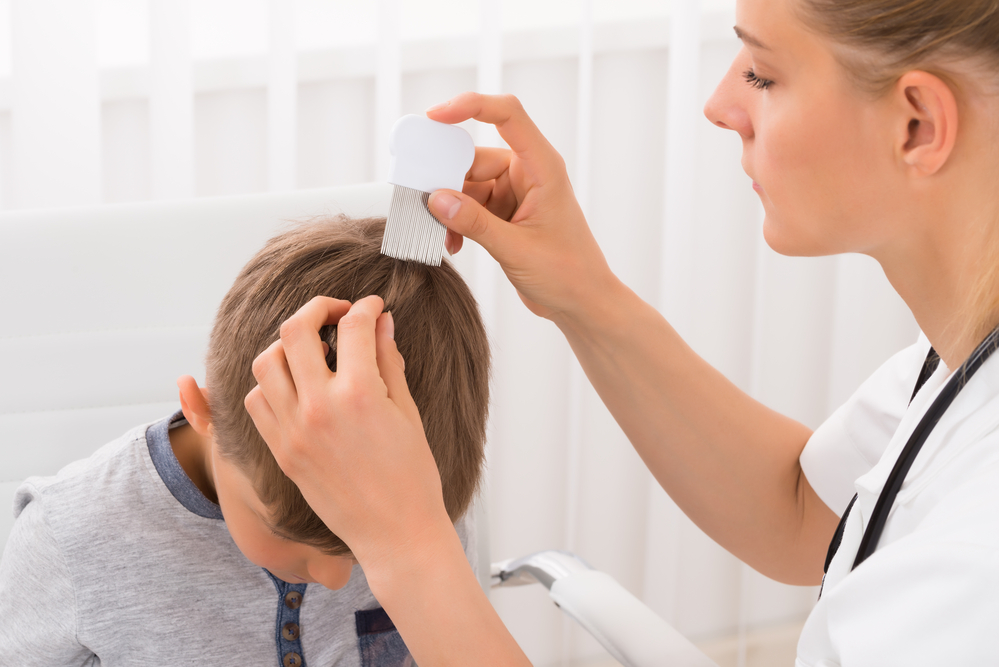Lice: What Every Parent Needs to Know
Lice are tiny insects that live on humans and feed on blood. Lice lay (eggs) nits – which are often mistaken for dandruff – and hatch in 8-9 days....
2 min read
FHR Research Team Aug 3, 2022 1:57:20 PM

Varicella is the virus responsible for the chicken pox and shingles infections. In the early 1990s, roughly 4 million people got the chicken pox each year with between 10,000 and 13,000 hospitalizations. Most cases occurred among children, with immunity afterward often lasting lifelong.
What Are The Symptoms of Chickenpox?
Primary infection (chickenpox) begins with a rash. Adults may have fatigue for 1-2 days before the disease. The rash usually appears first on the head, then on the chest or back, and then the arms and legs, with the greatest concentration on the chest. The average healthy child experiences 200-500 lesions. The rash may be accompanied by a fever for 2-4 days, though total duration of the rash is 10-14 days.
Secondary infection (shingles) occurs when the virus reactivates and causes disease. The virus multiplies in nerve tissue around the spinal cord and travels to the skin. Symptoms usually begin with deep pain around a sensory nerve, followed by a blistery rash (usually on the chest or back) 2-5 days later. The lesions can be painful and may be accompanied by a fever and fatigue. Symptoms usually resolve within 3-5 weeks.
In vaccinated children or children with secondary cases, varicella infection often produces fewer than 50 lesions and fever is rare.
What Is The Incubation Period of Chickenpox?
The incubation period is 14 to 16 days after exposure, with a range of 10 to 21 days.
How Do You Get Chickenpox?
Transmission requires exposure through: direct skin to skin contact, respiratory droplets from an infected person, or secretions from lesions.
There are several triggers for shingles including: emotional stress, physical stress, aging, and decreased immune function.
How Can I Prevent Chicken Pox?
The best way to avoid chickenpox is to avoid contact with those who are sick with the virus.
Chickenpox and Shingles Vaccines
A vaccine was licensed in 1995 and in 2014, 91% of children in the U.S. age 19-35 months had received the vaccine. The schedule now includes 2 vaccines, with a booster for ages 4-6 added in 2006. Shingles vaccines are also available for adults.
The benefits of the vaccine can be twofold for children. Not only are they protected against irritating and potentially scarring chickenpox, but they appear to have a significantly lower risk of developing shingles in childhood compared to unvaccinated kids who contract the disease. The rate of shingles cases in vaccinated children was 78% lower than it was among unvaccinated children who had contracted the virus, varicella.
.jpg?width=528&name=vaccine%20(1).jpg)
Treatment
Chamomile Herb & Essential Oil
Chamomile provides anti-inflammatory benefits to reduce the redness and irritation from the lesions. The essential oil also provides antiviral benefits. While there are not studies confirming its use for varicella specifically, there are studies evaluating its actions against viruses which are usually treated with acyclovir,
the pharmaceutical typically used for varicella. The essential oil can be ingested every 4-6 hours for the duration of the infection in a suitable preparation.
Oregano Essential Oil
In a 2011 study, Mexican oregano EO was evaluated for its actions against viral infections typically treated with acyclovir, which had become resistant to the antiviral. The active ingredient, carvacrol, was of specific interest. In the study, these viruses were susceptible to treatment. Oregano essential oil can be ingested by children 7 or older in a suitable preparation during the first 2-4 days of the infection or by adults during the earliest phase.
Cayenne
Cayenne salves and ointments are used to reduce nerve pain caused by shingles. Cayenne is used in many topical pain-relieving preparations and has a significant amount of research supporting its use. It can be applied topically to the affected area as needed for the duration of the rash.

REFERENCE
Koch, C., Reichling, J., Schneele, J., & Schnitzler, P. (2008). Inhibitory effect of essential oils against herpes simplex virus type 2. Phytomedicine, 15(1), 71-78.
Pilau, M. R., Alves, S. H., Weiblen, R., Arenhart, S., Cueto, A. P., & Lovato, L. T. (2011). Antiviral activity of the Lippia graveolens (Mexican oregano) essential oil and its main compound carvacrol against human and animal viruses. Brazilian Journal of Microbiology, 42(4), 1616-1624.
WEINMANN et al. (2019). Incidence of Herpes Zoster Among Children: 2003-2014. Pediatrics (2019) 144 (1): e20182917

Lice are tiny insects that live on humans and feed on blood. Lice lay (eggs) nits – which are often mistaken for dandruff – and hatch in 8-9 days....

While viruses are the most common cause of a sore throat, strep throat is a bacterial infection in the throat and tonsils caused by group A ...

Eczema is a common term for atopic dermatitis, a skin condition characterized by inflamed skin with itching, dryness, and irritation. It typically...